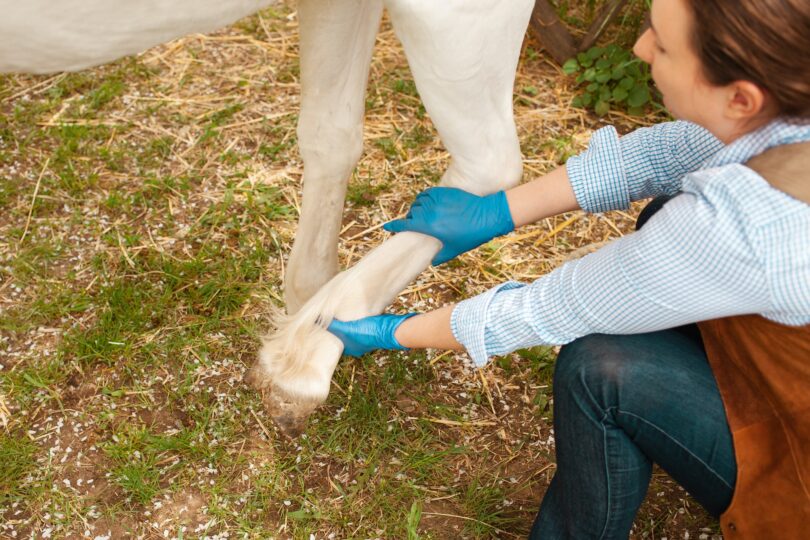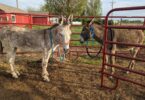Having an equine first aid kit stocked and ready to go in the event of an emergency is essential. Having an injured or unwell horse is stressful enough without realising that you don’t have the items you need to take care of them. Here are the items that are must haves for your first aid kit.
Gloves
There are two main reasons you will need gloves in your horses first aid kit. The first is that you will often need to apply chemicals such as Trush Buster. It’s best to pop on a pair of gloves to stop these chemicals coming into contact with your skin. The second reason in that if your horse is bleeding its a good idea to wear gloves again to stop the blood coming into contact with your skin.
Thermometer
Checking your horses temperate is an simple, quick and non-invasive step to take in monitoring your horses health. Should you need to ring your vet they will appreciate you having that information handy.
You can purchase a thermometer from the chemist for under $15. Ask your vet or an experience horse person to show you how to take your horses temperature. Typically a horses temperature will be between 37.5-38.5 degrees Celsius. However, you should get to know what is normal for your horse.
Betadine
In the event of a cut, wound or penetration betadine is a wonderful disinfectant. It’s also useful in the treatment of bacterial infections such as greasy heel and rain rot.
White Potties Ointment
Potties White ointment is a castor oil and zinc based cream. It is my ride or die product perfect for a range of applications from healing cuts and curing greasy heel. The formulation of the cream helps to maintain the correct level of moisture within the wound and in the case of greasy heel helps to keep the area dry.
Bandages and pads
Non-stick pads of various sizes can be purchased from your local chemist, sanitary pads also make a cheap alternative. They should be large enough to cover the whole wound.
There are two key types different of bandages that you should include in your kit, vet wrap and equip last. Vet wrap is usually brightly coloured, it is stretchy and will stick to itself. It’s perfect for keeping pads in place over wounds.
Because bandaging most be done correctly in order to prevent further damaging your horse, it is best to get your vet or an experienced horse person to teach you how to do this. There are also a number of helpful articles which explain this process.

A paste based poultice
You know that random swelling that will sometimes pop up in a horse for no particular reason? If this happens and your horse is not sore or tender a paste based poultice can help to reduce the swelling. In contrast to traditional poultices which need to held in place with a bandage, paste poultices such as Swell down stick to the limb and dry.
Antibacterial wash
Like betadine, a clorhexadine based anti-bacterial wash makes a useful addition to your first aid kit. An antibacterial wash is essential for treating conditions such as greasy heel and leg funk. My wash of choice is Malaseb.
Sharp scissors
There is nothing more frustrating than trying to remove a bandage with blunt scissors. For that reason its great to have a pair of sharp scissors, which permanently live in your first aid kit. Its ideal to choose a pair of scissors that have rounded ends which will make them a bit safer when removing bandages from your horses legs.
Whatever you do, don’t sucumb to temptation to let these creep into your show kit.
Thrush Treament
During wet periods I have a range of hoof care products that I use to keep Nonie’s feet happy and healthy, including Keratex Frog Power Cleanser. If your best efforts to prevent thrush have failed, and your horse has developed a case of seedy toe, having something to treat the thrush, such as Trush Buster is essential. Make sure you follow safety instructions when using this product including wearing gloves.
Syringes
Syringes are another must have item in your first aid kit. They are useful for administering medications such as Bute or liquids such as oral rehydration solution over the tongue.
And last but not least a medium sized plastic box will help you keep all of these items clean, dry and together.







